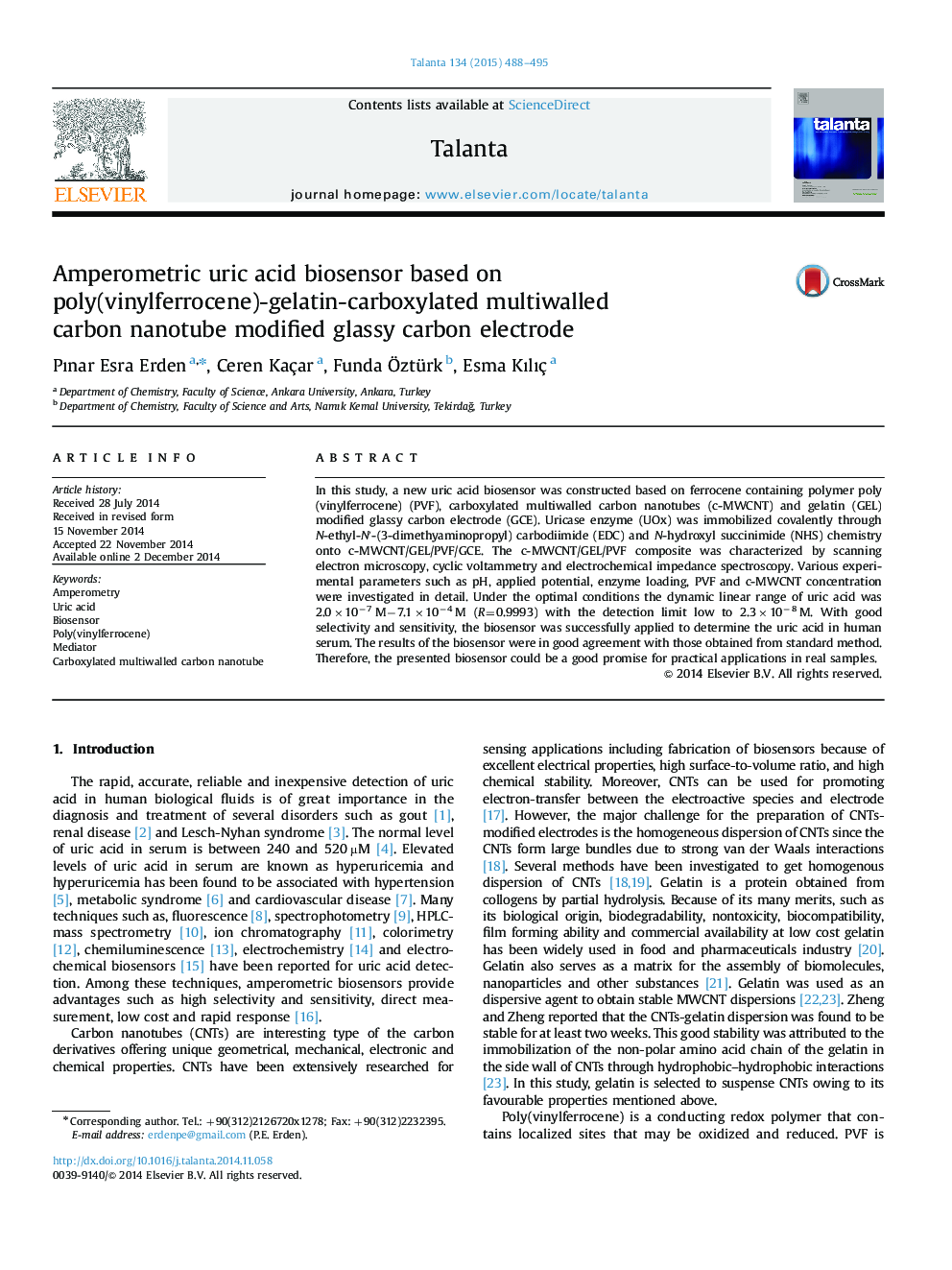| Article ID | Journal | Published Year | Pages | File Type |
|---|---|---|---|---|
| 1244109 | Talanta | 2015 | 8 Pages |
•Uric acid biosensor was constructed based on poly(vinylferrocene) and carbon nanotubes•Poly(vinylferrocene) acted as an electron transfer mediator for UOx instead of O2•The biosensor exhibited wide linear range, low detection limit and good reproducibility.•Uric acid was succesfully determined in human serum
In this study, a new uric acid biosensor was constructed based on ferrocene containing polymer poly(vinylferrocene) (PVF), carboxylated multiwalled carbon nanotubes (c-MWCNT) and gelatin (GEL) modified glassy carbon electrode (GCE). Uricase enzyme (UOx) was immobilized covalently through N-ethyl-N′-(3-dimethyaminopropyl) carbodiimide (EDC) and N-hydroxyl succinimide (NHS) chemistry onto c-MWCNT/GEL/PVF/GCE. The c-MWCNT/GEL/PVF composite was characterized by scanning electron microscopy, cyclic voltammetry and electrochemical impedance spectroscopy. Various experimental parameters such as pH, applied potential, enzyme loading, PVF and c-MWCNT concentration were investigated in detail. Under the optimal conditions the dynamic linear range of uric acid was 2.0×10−7 M−7.1×10−4 M (R=0.9993) with the detection limit low to 2.3×10−8 M. With good selectivity and sensitivity, the biosensor was successfully applied to determine the uric acid in human serum. The results of the biosensor were in good agreement with those obtained from standard method. Therefore, the presented biosensor could be a good promise for practical applications in real samples.
Graphical abstractThe stepwise fabrication process of the biosensor. Figure optionsDownload full-size imageDownload as PowerPoint slide
